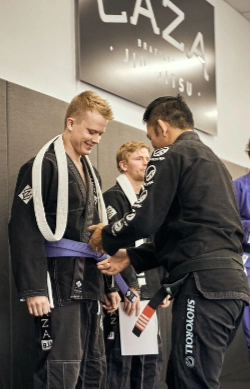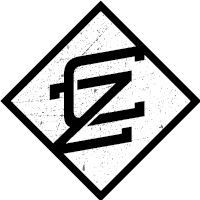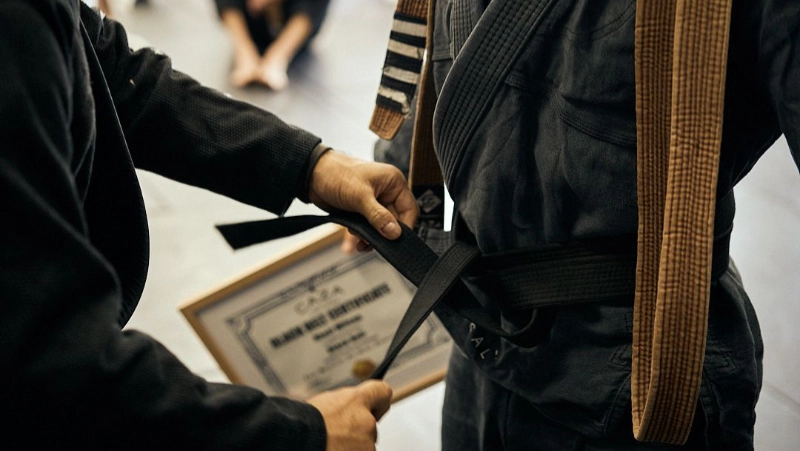How long does it take to learn BJJ?

CAZA BJJ Headquarters Now In Noosaville
August 2, 2024The dream of overnight BJJ mastery vs. the truth of the mat
Everyone wants the shortcut. The hack. The six-week plan that turns you into a martial arts machine. But Brazilian Jiu-Jitsu doesn’t play by Instagram rules. You don’t learn BJJ like you cram for a test—you live it. The mat humbles you, molds you, then demands you show up again.
Because the truth? There is no “overnight” in BJJ. There’s just the next roll.
Why people ask this question—and what they’re really asking
When someone asks “How long will it take to learn BJJ?” they’re rarely just asking about time. They’re asking when they’ll stop feeling like a fish out of water. When the flailing stops and the flow begins. They want to know when it clicks—when confidence replaces confusion and movement feels instinctive, not mechanical.
They want to know when the chaos turns into something beautiful.
BJJ is a long game, but not all progress takes years.
Brazilian Jiu-Jitsu is a marathon disguised as a maze. Mastery can take over a decade—but that doesn’t mean you’ll be lost in the weeds for years. Meaningful progress happens fast if you train smart and consistently. You won’t become a black belt in a year, but you will build real skill, confidence, and control far sooner than you think.
So let’s break down exactly what “learning BJJ” means—stage by stage.
The Short Answer
TL;DR: If you’re training consistently—think 2 to 4 times a week—you can expect to feel proficient enough to defend yourself or roll with confidence in about 6 to 18 months.
Achieving true mastery? That’s a 10-to-15-year climb. And the belt around your waist will tell only part of that story.
In other words, you can get good at BJJ without devoting your entire life to it—but mastery still demands time, sweat, and a lot of humble pie.
What Does “Learning BJJ” Actually Mean?
To understand what “learning BJJ” means depends on what you’re aiming for. Are you trying to protect yourself in a street fight, dominate at Brazilian Jiu-Jitsu competitions, or simply hold your own when another grappler is doing their best to put you to sleep?
Let’s break it down…
Basic Competence: Survival and Self-Defense
You know enough to keep yourself safe. You can recognise danger, escape bad positions, and pull off a few submissions against someone who doesn’t train. You’re not flashy—but you’re functional.
Timeline: 6–12 months of regular training (3 times per week).
Reality Check: You’ll still be tapping a lot—but you’ll know why, and you’ll know how to fix it.
Intermediate Proficiency: Chaining Moves, Controlled Rolling
This is when you stop simply reacting and start anticipating. You can roll with more experienced teammates, chain techniques, and hold your own across positions. BJJ starts to feel fun, not just overwhelming.
Timeline: 1.5–3 years, typically around the blue belt mark.
Reality Check: You’re no longer just surviving—you’re starting to become a threat to the unwary.
Advanced Mastery: Fluidity, Creativity, and Teaching
You move like water. You see the patterns before they unfold. You’re innovating, not imitating. You teach newer students, you refine what you know, and you adapt under pressure without thinking.
Timeline: 7–15+ years—usually brown to black belt territory.
Reality Check: This level isn’t about how many moves you know—it’s how well you can use the ones that matter.
Bottom line? Your goals define your timeline. If you’re chasing practical self-defense, you’ll get there faster than someone pursuing technical mastery. But no matter your aim, every session adds up—so consistency is your superpower.
The Typical BJJ Learning Timeline: From White Belt to Black
Let’s map out the journey most practitioners follow—with consistent training (think 3 to 4 times a week), here’s what the Brazilian Jiu-Jitsu belt road usually looks like:
⚪️ Beginner (0-1.5 years)
You’re learning to breathe. Literally. This phase is all about survival—understanding positions, staying calm under pressure, and getting the basic movements down. You are learning the names of each move as you go.
Focus: Guard, mount, escapes, intro to submissions (armbar, triangle, rear naked choke – RNC).
🔵 Blue Belt (1.5-3 years)
You’ve got your legs under you with ever-growing confidence. You’re sparring effectively, connecting techniques, and reacting with purpose instead of panic. The fundamentals are becoming second nature.
Focus: Strategy, solid escapes, positional control, high-percentage submissions.
🟣 Purple Belt (4-6 years)
Here’s where your style starts to emerge. You’re troubleshooting in real time, developing go-to systems, and beginning to teach others what you’ve internalised. You are starting to master things that seem to work for you in sparring.
Focus: Complex transitions, counters, deeper understanding of timing and leverage.
🟤 Brown Belt (7-9 years)
You’re polishing. Sharpening. Teaching. You’re filling in the gaps and refining your technique like a sculptor. Your understanding is now conceptual, not just mechanical.
Focus: Fluidity, precision, coaching, problem-solving under resistance.
⚫️ Black Belt (9-15 years)
This is mastery. Not perfection—but mastery. You don’t just do jiu-jitsu. You are jiu-jitsu. You can create, adapt, dismantle, rebuild. And more often than not—you’re teaching the next generation.
Focus: Innovation, leadership, legacy.
What Influences Your Progress?
Your path through Brazilian Jiu-Jitsu isn’t just determined by time—it’s shaped by how you train, who you train with, and what you’re training for. Here’s what really moves the needle:
Training Frequency: Why 3-4 Times Per Week is The Magic Number
Train once a week, and you’re resetting every session. Train twice, and you’re building slowly. But hit three to four sessions per week, and BJJ starts to stick. Techniques compound. Muscle memory develops. You build not just skill, but rhythm.
Think of it as learning a language—you need immersion, not occasional flashcards.
Consistency vs. Intensity: The Tortoise Usually Wins
Going all-out for two weeks then ghosting the gym for a month? That’s the fast track to burnout and plateaus. Slow, steady, consistent training will always beat sporadic intensity. The body adapts through routine—so showing up is half the battle.
Coaching Quality: Not All Mats Are Equal
A seasoned coach doesn’t just show techniques—they teach concepts. They correct the tiny things that make a huge difference. They know when to push you, when to pull you back, and how to guide your growth. This is core to how all CAZA BJJ coaches approach teaching.
Good instruction fast-tracks progress. Poor instruction builds bad habits.
Your Background: Athletic or Martial Arts Experience Helps
If you’ve wrestled, boxed, or trained in another martial art, you’ll likely have a head start—especially in body awareness, timing, and handling pressure. Even general athleticism (mobility, cardio, coordination) can shave months off your learning curve.
Personal Motivation: Choose Your Path, Know Your Pace
Are you training for self-defense? Competitions? Fitness? Each path requires a different tempo. Competitors might train twice a day and obsess over details. Self-defense students may focus on positional control and quick escapes. Your “why” will determine your “how.”
After 1 Year of Training: What Should You Know?
Let’s say you’ve trained consistently for 12 months, 3 times per week. What should be in your toolkit?
Basic self-defense skills:
- Positional awareness
- Escaping bad spots (like mount or back control)
- Staying calm under pressure
Understanding of key positions:
- Guard
- Mount
- Side control
- Back control
Fundamental submissions:
- Armbar
- Triangle choke
- Rear-naked choke
Sparring confidence:
- You won’t dominate the room, but you’ll hold your own
- You’ll start anticipating instead of just reacting
- And most importantly: you’ll love the roll
The Phases of BJJ Learning
Think of learning BJJ not just in terms of time—but in phases. Like a video game, each stage unlocks new challenges and strategies. You’ll note that the phases we’ll talk about aren’t tied to a belt colour.
Here’s the four-part arc almost every ‘jits‘ practitioner goes through:
Phase 1: Survival
Timeframe: 0–6 months
The goal? Don’t drown. You’re learning how to breathe under pressure—literally and metaphorically. You’re getting comfortable being uncomfortable, building awareness of positions, and figuring out how not to get tapped every 30 seconds.
Milestones:
- You can recognise danger before it’s too late.
- You know when to tap and when to fight.
- You can hold your own against other beginners.
Plateau Risk: Feeling overwhelmed or discouraged from constant tapping.
Push Through: Focus on small wins—lasting longer, escaping once, or staying calm.
Phase 2: Defense
Timeframe: 6–18 months
Now you’re learning how to escape, not just endure. You begin building solid defenses from bad positions and understanding what your opponent wants—and how to deny it.
Milestones:
- Reliable escapes from mount, side control, and back control.
- Fewer panic taps. More thoughtful reactions.
Plateau Risk: Getting stuck in “defensive mode”—afraid to attack.
Push Through: Start experimenting with sweeps and counters, even if messy.
Phase 3: Control
Timeframe: 1.5–3 years
Welcome to the driver’s seat. You now seek dominant positions and understand how to maintain them. You begin connecting moves—mount to back take, guard pass to control. Your jiu-jitsu has structure.
Milestones:
- Stable positional control.
- Awareness of transitions.
You’re chaining moves together.
Plateau Risk: Becoming predictable.
Push Through: Study timing and strategy. Add feints and fakes.
Phase 4: Offense
Timeframe: 3+ years
You’re hunting submissions—not just surviving or stalling. Your attacks are set up, not forced. You understand setups, counters, and when to strike.
Milestones:
- Smooth submission setups.
- Knowing when to flow and when to squeeze.
You can guide a roll without brute force.
Plateau Risk: Relying too much on a “signature” move or getting too comfortable.
Push Through: Diversify your game. Teach others—it deepens your understanding.
Reminder: These phases aren’t strictly linear. You might be offensive in one area and still surviving in another. That’s normal—and expected.
Common Questions—Answered
Let’s tackle the questions every BJJ beginner googles at 2am after their third kimura tap of the night:
How long until I can handle an untrained opponent?
If you’re training consistently—around 2-3 times per week—you can usually handle an untrained person of similar size and strength in 6 to 18 months. That means controlling the fight, neutralising aggression, and finishing if needed.
Why? Because BJJ is built for leverage, not size. Most people outside the gym don’t know how to manage distance, avoid submissions, or escape control.
🔵 How long to get a BJJ blue belt?

Most students earn their blue belt in 1.5 to 3 years. That timeline depends on not only your attendance but your ability to apply techniques in sparring.
It’s not just about how many moves you know and their fancy names. Anyone can learn that stuff from YouTube. It’s whether you can use them when someone’s actively trying to attack you.
⚫️ How long to get a BJJ black belt?
Roughly 9 to 15 years. It all depends on your personal dedication and development. Over a length of time like this there are numerous variables at play, both inside and outside the gym.
Reaching black belt means you’ve demonstrated mastery of technique, consistency, and the ability to teach or lead. It’s about developing broad depth in your Brazilian Jiu-Jitsu game, not ego.
Your belt reflects a roughly accurate indication your overall progression, but your skill on the mat evolves daily. Focus on growth, not promotions.
In the end, it’s what you’ve learned that matters
Learning Brazilian Jiu-Jitsu isn’t just about earning belts—it’s about becoming someone new on the mat, session by session. It’s the art of persistence dressed up as a combat sport. A lifelong practice disguised as a grappling game.
Yes, the techniques matter. Yes, the belts are cool. But what really counts? The resilience you build. The humility you learn. The ability to keep showing up—bruised, sore, sometimes frustrated—but hungry to grow.
Progress in BJJ is rarely loud. It’s quiet, subtle, and deeply personal. Maybe today you didn’t get swept. Maybe you held side control. Maybe you tapped five times—but understood why. That’s progress.
So take your time. Train with intention. Take that first BJJ lesson and never look back.


